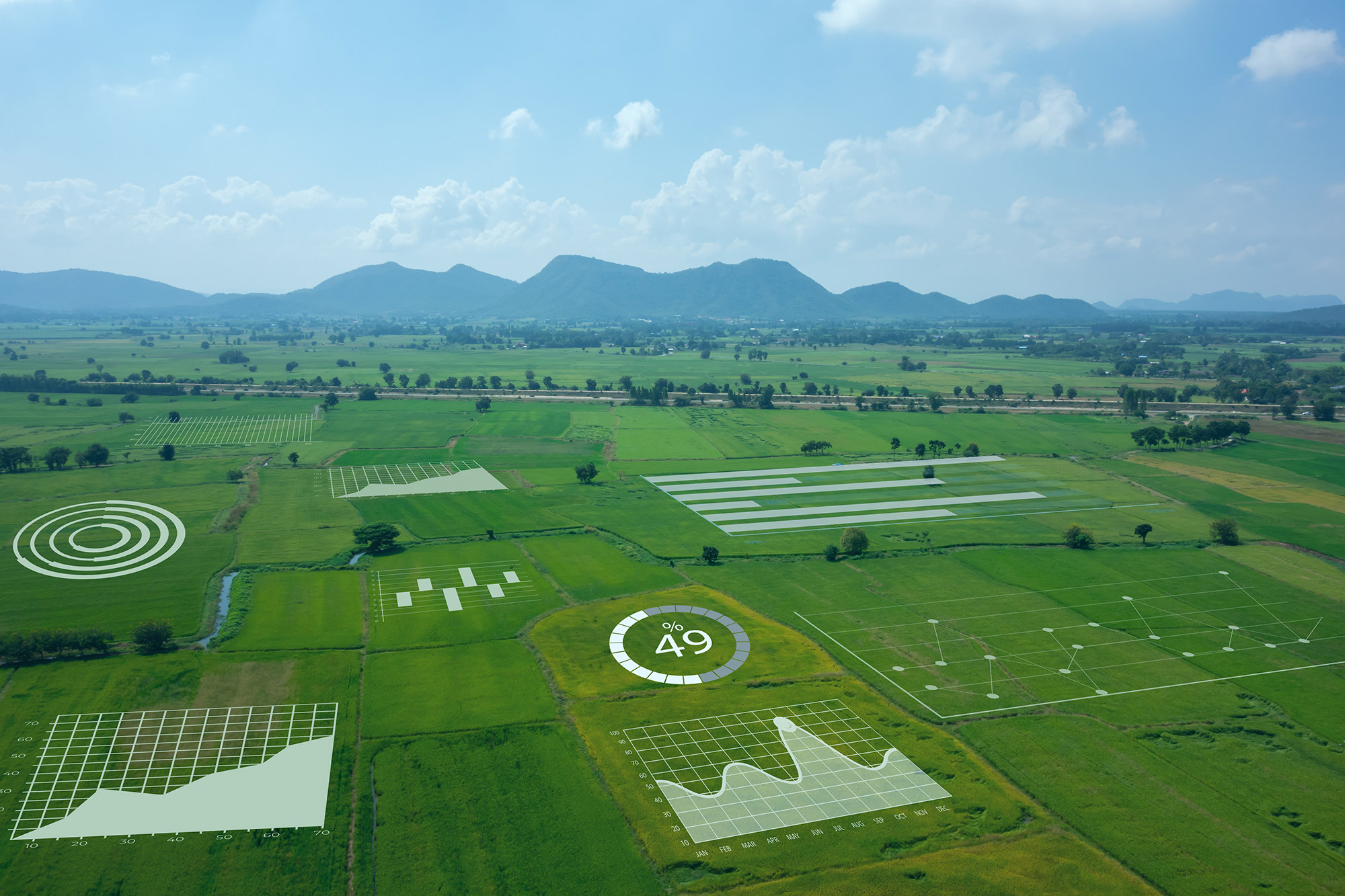 Data has revolutionized the planting, growing, and harvesting of crops on farms worldwide. Here’s why intelligent farmers use data to drive decisions and boost profits.
Data has revolutionized the planting, growing, and harvesting of crops on farms worldwide. Here’s why intelligent farmers use data to drive decisions and boost profits.
Data, not unlike the introduction of the cotton gin during the Industrial Revolution, is rapidly changing the way farmers make decisions and operate their businesses.
It’s not just to save energy or boost profit margins, either. Based on predictions that the population will reach 9.7 billion people by 2050, experts at all levels are looking closely at sustainable ways to increase healthy food production. Tech tools that rely on data are typically the cornerstone of these initiatives.
But how do farmers use data exactly? And why is it wise to adopt tech into the harvest cycle? Keep reading to find out.
What is data collection in agriculture?
Data collection in agriculture is one of the foundational components of smart farming (also called precision agriculture).
Relying on technology to gather information throughout the agriculture lifecycle, farmers can narrow the scope of their farming practices and optimize their processes.
Examples of data collection in agriculture include:
- Crop yield data
- Soil moisture level monitoring
- Drone or satellite imagery
- Streamlining and enhancing farming practices
- Optimal harvest time
Why is data critical in agriculture?
As the population increases globally, experts look closely at how the agricultural industry can increase healthy food production while remaining sustainable and profitable.
Using data to drive decisions and monitor operations helps farmers achieve both goals.
How can the IIoT be used in agriculture?
IIoT (Industrial Internet of Things) is a term used for the billions of devices worldwide now connected to the Internet. IIoT and automation in agriculture are closely linked to precision agriculture and data collection on farms.
Data is typically collected via IIoT-connected sensors and tools that compile, sort, and analyze the information.
These devices do more than just offer suggestions, too. Many are autonomous, which frees up farm owners to focus on the big picture of their operation.
How are data and analytics transforming agriculture?
Here are some ways data is revolutionizing how we plant, grow, and harvest healthy food.
Off-Site Crop Production Data
From the time seeds are planted to when the optimal time comes to pick a fruit or vegetable, data is changing how—and where—farmers work.
Farmers no longer have to be on-site to make critical decisions. Instead, using a computer or even a smartphone, they can execute decisions from home.
Healthier Soils
Using drones and other imagery technologies, sensors determine soil moisture levels and overall health from the air. This not only improves the quality of the end product but makes farming more sustainable too.
Soil erosion is a considerable worry in the eyes of environmentalists, who say monocropping is responsible for soil erosion in America. For example, topsoil levels in Iowa have shrunk by as much as 50 percent in Iowa, one of America’s biggest producers of corn, soybeans, and oats.
One solution to this is to regularly rotate plantation sites, which data collection can help identify.
Strengthened Supply Chains
Food waste at the farm level is an oft-overlooked issue. Many believe waste only happens at the grocery store or once consumers take produce home with them. But one study found that as much as 30 percent of food never leaves the farm and is simply left there to decompose.
Increased supplier and shipping costs and blemishes or imperfections on produce are two reasons this happens with alarming regularity. Collecting data helps farmers harvest at the optimal time and identify outlier products early in the growth cycle, making their practices more efficient.
Is IIot the future of agriculture?
Yes, assuming you don’t already consider IIoT the “present” of agriculture, too. Tech experts believe the IIoT will bring farming practices to the next level, making them streamlined.
For example, crop-picking robots that determine ripeness and readiness of produce are becoming a regular thing on farms across America. As price points for these devices decrease, they will likely become ubiquitous.
The IIoT plays an integral role in getting crops to the point that they’re ready for robots to harvest them. And as more robots, drones, and sensors are placed on farms worldwide, more data will be available to farmers to make critical decisions that lead to more products using fewer resources.
What are the limitations of agriculture data systems?
One of the significant limitations of agricultural data systems is a lack of connectivity in remote areas. Collecting data is essential, but if farmers can’t access the information in real-time, the data is less effective and may still lead to delays or costly errors during the growth cycle.
Fortunately, FreeWave’s agricultural solutions can solve connectivity issues in the harshest and most remote environments, so farmers never have to worry about accessing their data in real-time.
Infuse intelligence into your agricultural operations today with FreeWave. Click here to learn more.




